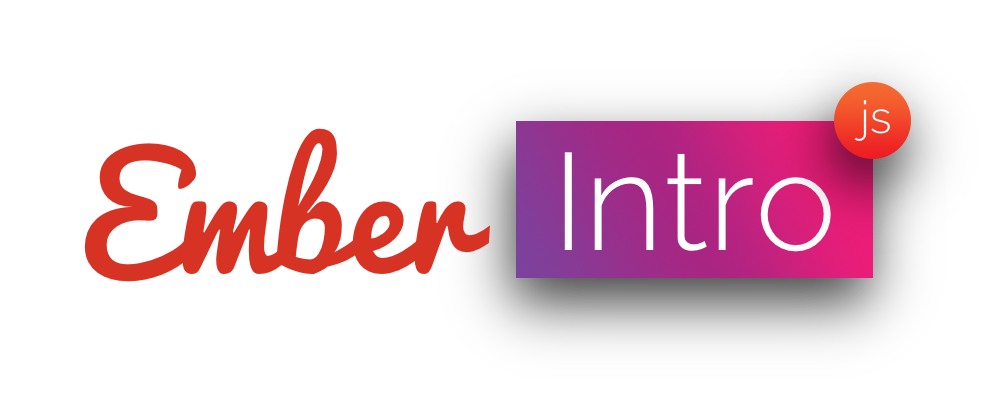Ember IntroJS wraps introjs in an Ember Component to guide users through your app.
ember install ember-introjs
You can customize wrapper using:
position="top"intro="Welcome!"tooltipClass="tooltip-class"highlightClass="highlight-class"position="top"hint="Use it :)"hintPosition="bottom-left"
Options are documented in the code as well as in IntroJS Docs
You can declare an array in JavaScript in your controller or parent component:
// app/controllers/ticket.js
import Controller from '@ember/controller';
import { computed } from '@ember/object';
export default Controller.extend({
steps: computed(function() {
return [
{
element: $('#step1'),
intro: 'Step 1!'
},
{
element: $('#step2'),
intro: 'Step2!'
}
];
})
});Then to use the steps, you can use the steps in your handlebars template:
IntroJS supports a series of hooks for getting notified for when users switch between steps or exit. You can subscribe to these actions using the typical actions hash in your Route or Controller:
// app/routes/ticket.js
import Ember from 'ember';
export default Ember.Route.extend({
actions: {
introBeforeChange(previousStep, nextStep, introJSComponent,
elementOfNewStep){
// You could track user interactions here, e.g. analytics.
this.sendAnalytics(prevStep);
}
}
});Then pass the name of the action in the handlebars helper that renders the component below.
Called when the user clicks next (or uses their keyboard). Called before
on-change. Given the currentStep, the nextStep, the introJSComponent,
and the DOM element of the next step.
Called after on-before-change when the user moves a step (backwards or
forward) in the introduction. Gives the current step, the introJS
component isntance, and the element of the current step.
Called after on-change when the user moves a step (backwards or
forward) in the introduction. Gives the current step, the introJS
component isntance, and the element of the current step.
Called when the user quits the intro via the "Skip" button, hitting
escape, or clicking outside the overlay. Given the current step, and
the introJS component.
Called when the user finishes the intro by clicking "Done" or hitting right on the keyboard until the end. Called with the last step and the introJS component instance.
Intro JS has a variety of options available to it. You can see the full list here, but we also provided the full list below. You'll notice that in the list below options all follow the dasherized convention of HTML and ember-cli filenames. The original list uses camelCase names, and so does IntroJS. Ember IntroJS will do the conversion for you.
You can also set other options using the Handlebars helper syntax: `
Or you could extend your own base class to override defaults instead of specifying them every time in the Handlebars helper:
myapp/app/components/my-intro-js.js
import IntroJSComponent from 'ember-introjs/components/intro-js';
export default IntroJSComponent.extend({
'exit-on-esc': true
});You can also reopen the class:
import IntroJSComponent from 'ember-introjs/components/intro-js';
IntroJSComponent.reopen({
'exit-on-esc': true
});| property | description |
|---|---|
steps |
For defining steps using JSON configuration (see this example) |
next-label |
Next button label |
prev-label |
Previous button label |
skip-label |
Skip button label |
done-label |
Done button label |
tooltip-position |
Default tooltip position |
tooltip-class |
Adding CSS class to all tooltips |
highlight-class |
Additional CSS class for the helperLayer |
exit-on-esc |
Exit introduction when pressing Escape button, true or false |
exit-on-overlay-click |
Exit introduction when clicking on overlay layer, true or false |
show-step-numbers |
Show steps number in the red circle or not, true or false |
keyboard-navigation |
Navigating with keyboard or not, true or false |
show-buttons |
Show introduction navigation buttons or not, true or false |
show-bullets |
Show introduction bullets or not, true or false |
show-progress |
Show introduction progress or not, true or false |
scroll-to-element |
Auto scroll to highlighted element if it's outside of viewport, true or false |
overlay-opacity |
Adjust the overlay opacity, Number |
disable-interaction |
Disable an interaction inside element or not, true or false |
See setOption to see an example.
Ember IntroJS comes with a set of testing helpers.
To use them, first import them in your tests/test-helper.js file:
// tests/test-helpers.js
import './helpers/ember-introjs';See the LICENSE file included in this repository.
Keep in mind that if you like to use Intro.JS for commercial use, you should buy a commercial license. You can find more information on the intro.js project site: https://introjs.com/#commercial
Please note that this project is released with a Contributor Code of
Conduct. By participating in this project you agree to abide by its
terms, which can be found in the CODE_OF_CONDUCT.md file in this
repository.


